Skip to content
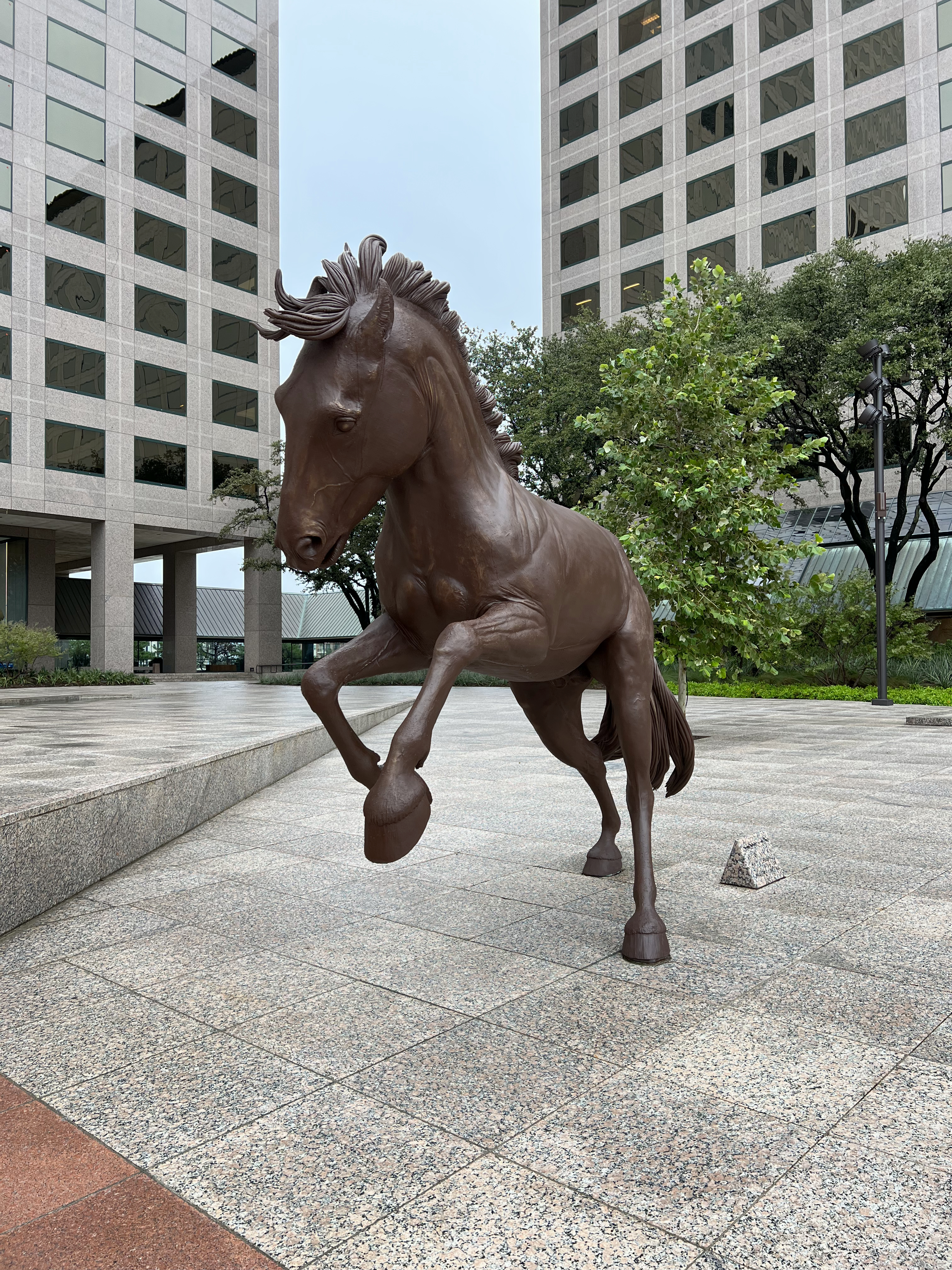
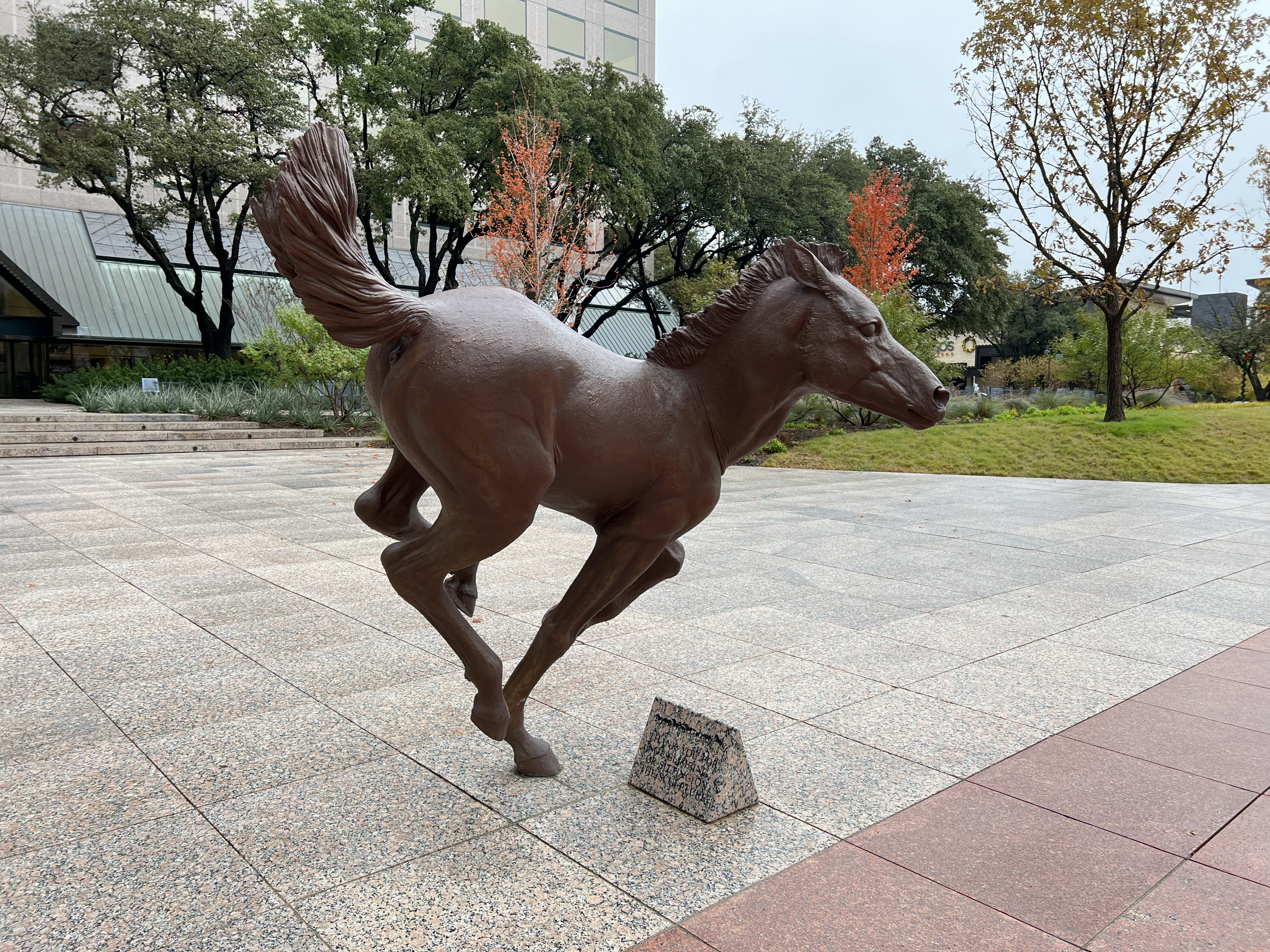

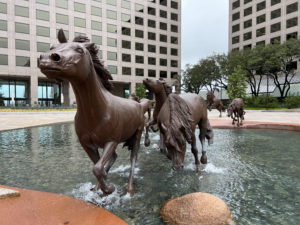
Galloping across an urban plaza in Las Colinas, these larger-than-life bronze mustangs represent a unique piece of Texas history . . . and look gorgeous at the same time. The scale alone is awe-inspiring.



Of course people think of horses when they think of the Lone Star State, but these beauties are wild mustangs – descendants of the Spanish Andalusians that were used in the area by Spanish explorers in the 1500s. The word “Mustang” derives from the Spanish words mesteno, which means “wild” or “stray.”
They enabled the conquistadors to move faster across the land and carry more equipment.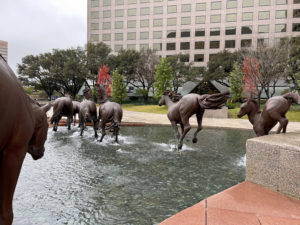
Over half of the human on the expedition had died before they came down the Trinity River, and the horses were set free before they left to return to their home country. The resulting herds were used by the Caddo tribe in East Texas in the 1600s. Two hundred years later, large herds of mustangs ran freely over the Texas plains. They were the favored horses used by the Pony Express and to drive Longhorns to market.
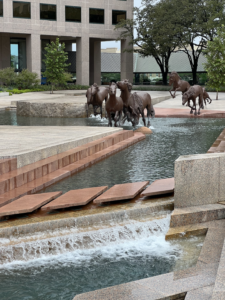
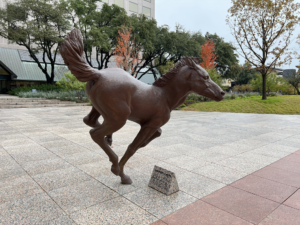
An estimated 1 million wild horses used to roam Texas!
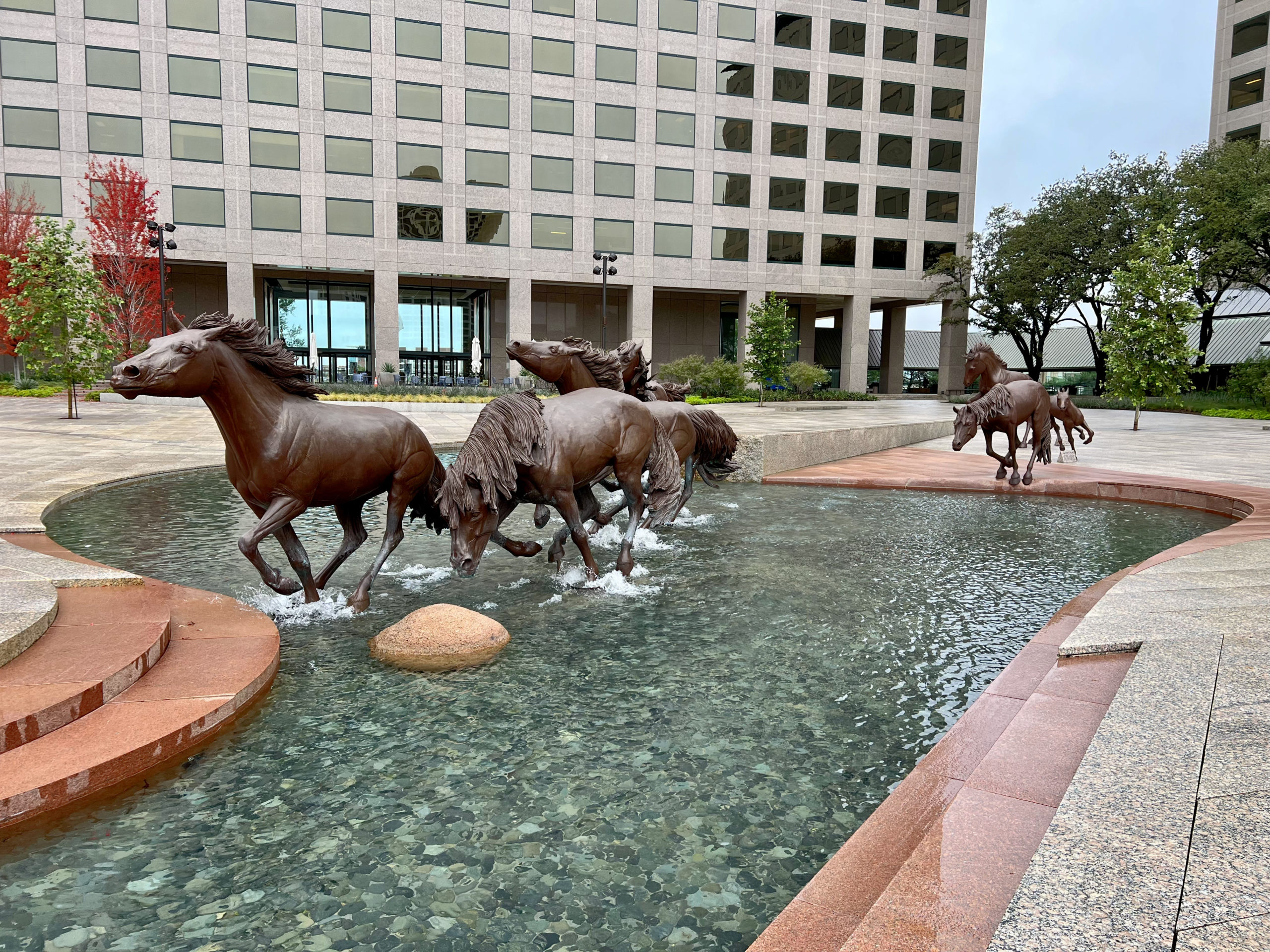
Created by wildlife artist Robert Glen, who lives in South Africa, the statue was dedicated in 1984. The statues took eight and a half years to create, which includes one year just for the installation process! Stampeding down a 400-foot river setting in a large pink granite plaza, it’s one of the largest equestrian sculptures in the world. Composed of a pair of stallions, five mares and two colts, the details are so exquisite you can almost hear them whinny as they toss their heads. Small fountains at the base of their hoofs create the illusion of splashing as they run.
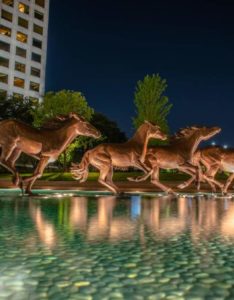
Visit the Las Colinas Mustangs and their free museum at 801 W. Irving Blvd in Irving, Texas.

What’s 15 feet tall with a 35-foot wingspan and gleams in the sunlight? A metal statue of a Phoenix created by Houston based artist Bob Bacon that now guards the gate of his brother’s Galveston ranch.
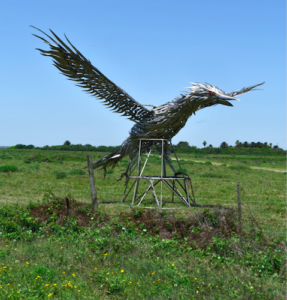
Bacon’s creation first appeared in the 2017 Houston Thanksgiving Day Parade, after he created it as a post Hurricane Harvey symbol of hope and recovery.
Since it’s big debut, the statue has been nesting in a warehouse, waiting for its next chance to take flight.
 The onset of the coronavirus pandemic inspired the family to install the phoenix on Galveston Island to once again provide a symbol of hope. The Bacon Ranch is an appropriate home for this particular piece of artwork, since most of the land on the ranch has been set aside as grounds for the migrating birds that pass over Galveston Island each year.
The onset of the coronavirus pandemic inspired the family to install the phoenix on Galveston Island to once again provide a symbol of hope. The Bacon Ranch is an appropriate home for this particular piece of artwork, since most of the land on the ranch has been set aside as grounds for the migrating birds that pass over Galveston Island each year.
The family welcomes visitors to pull along the side of the road to get a close look and photos, but asks that no one trespass beyond the fence.
To visit, travel west from Galveston on FM 3005 past Jamaica Beach, and look on the north side of the road.
No binoculars required!








 The onset of the coronavirus pandemic inspired the family to install the phoenix on Galveston Island to once again provide a symbol of hope. The Bacon Ranch is an appropriate home for this particular piece of artwork, since most of the land on the ranch has been set aside as grounds for the migrating birds that pass over Galveston Island each year.
The onset of the coronavirus pandemic inspired the family to install the phoenix on Galveston Island to once again provide a symbol of hope. The Bacon Ranch is an appropriate home for this particular piece of artwork, since most of the land on the ranch has been set aside as grounds for the migrating birds that pass over Galveston Island each year.